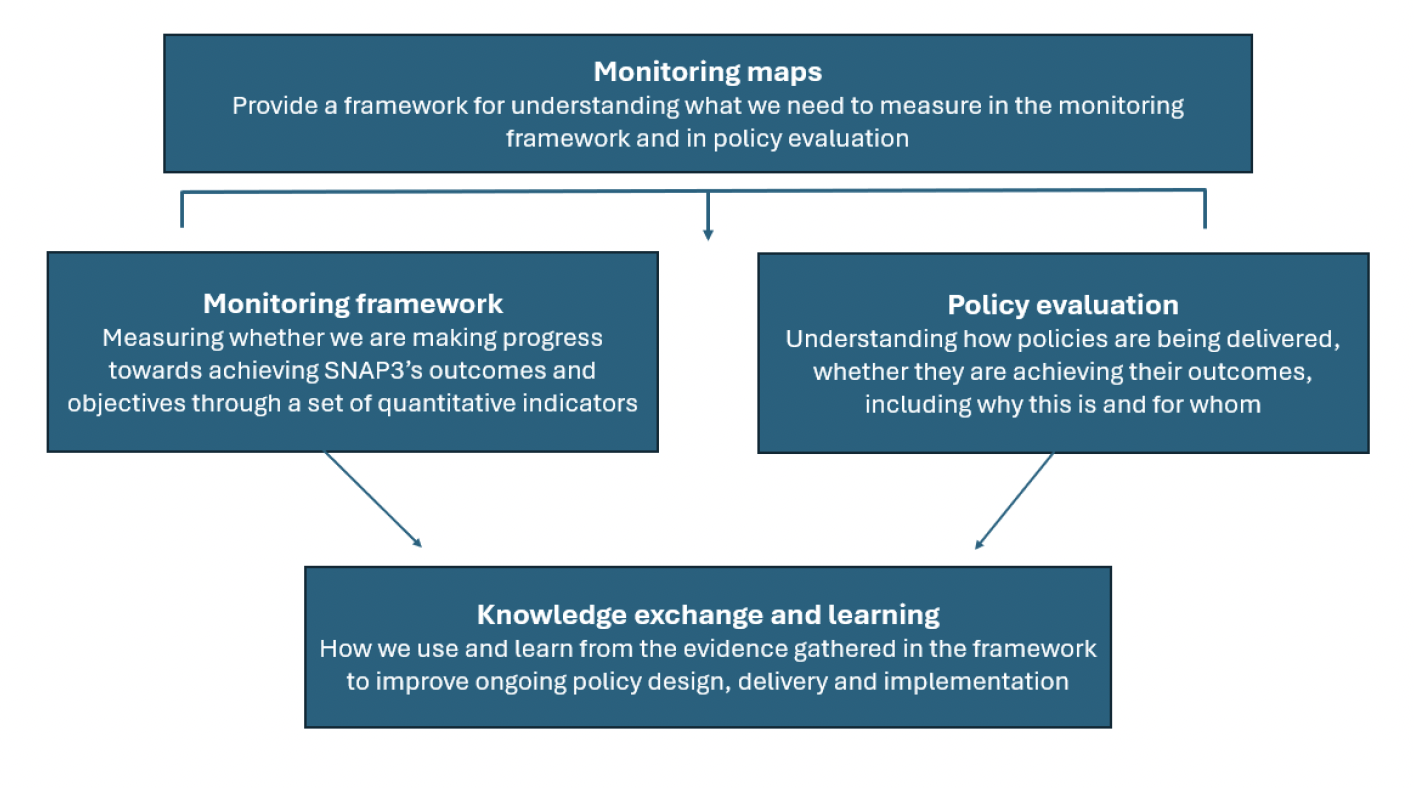Climate change - Scottish National Adaptation Plan 2024-2029: monitoring and evaluation framework
Framework we will use to monitor and evaluate progress in delivering the Scottish National Adaptation Plan 2024 to 2029. The Adaptation Plan sets out the actions that the Scottish Government and partners will take to respond to the impacts of climate change from 2024 to 2029.
How this framework is structured
The rest of this document outlines and explains the various elements of the SNAP3 monitoring and evaluation approach. The framework has been developed to both monitor key indicators of progress towards successful adaptation in Scotland and evaluate how individual policies are contributing to this change. Monitoring maps describe the pathways to change and help to identify what we need to measure within this framework. Importantly, all elements of the monitoring and evaluation approach are intended to be underpinned by a commitment to knowledge exchange and learning so that the evidence and learning gathered can feed back into policy development and be accessible and useful to a wide range of stakeholders.
A summary of the monitoring and evaluation framework is provided figure 1 and accompanying text below:

Monitoring maps
We have developed monitoring maps to describe the pathways through which we expect our policy and delivery activities, supported by 'enabling factors', to contribute to the SNAP3 objectives, outcomes and overall strategic aim of building Scotland's resilience. These maps are based on the monitoring framework approach developed by the Climate Change Committee (CCC) which is used to assess the effectiveness of adaptation action across the UK.
A monitoring map has been developed for each of the 4 domestic outcome areas of the Plan (Nature Connects, Communities, Public Services and Economy and Industry). These individual monitoring maps are accompanied by an overall outcome pathways map. This describes, at a high level, the pathways of change from objectives to outcomes and overall strategic aim. The outcomes and objectives in these maps will be measured through our outcome and objective indicators. These outcome and objective indicators cannot, though, be understood in isolation. This is why it is important that the activities and enablers are mapped out. Effective policy evaluation will support our understanding of these activities and enablers.
Outcome and objective indicators
In this document we outline the indicators we plan to use to track progress against the SNAP3 outcomes and objectives. We also describe the data sources we will use to track progress against each indicator. More detailed information on data sources, and assessment of indicator quality is included in Appendix 1. Indicators included have been designed to be practical and feed into a framework which can be operationalised from the start of the SNAP3 period. However, key gaps and data limitations which have emerged during the indicator development process are also highlighted along with an approach to future data development.
Evaluation
The importance of evaluating adaptation policies and activities is outlined later in this document. This will be important for understanding whether policies are working, in what ways and from whom. Evidence from individual policy evaluations can help us to better understand their contribution to progress being made in SNAP3's outcomes and objectives. This document sets out an approach to collaboratively developing an evaluation strategy and guidance for SNAP3's key policies.
Knowledge exchange and learning
We know that for the evidence collected through this monitoring and evaluation framework to be useful it has to be designed to align with policy development processes and with wider stakeholders in mind. Evidence gathered should be shared, presented and disseminated in a way which is useful, accessible and engaging to all stakeholders, particularly key decision makers who can use the learning to inform evidence-based policy improvement and development. This framework therefore also sets out an approach and commitment to developing our knowledge exchange and learning practices throughout the lifetime of SNAP3.
Contact
There is a problem
Thanks for your feedback